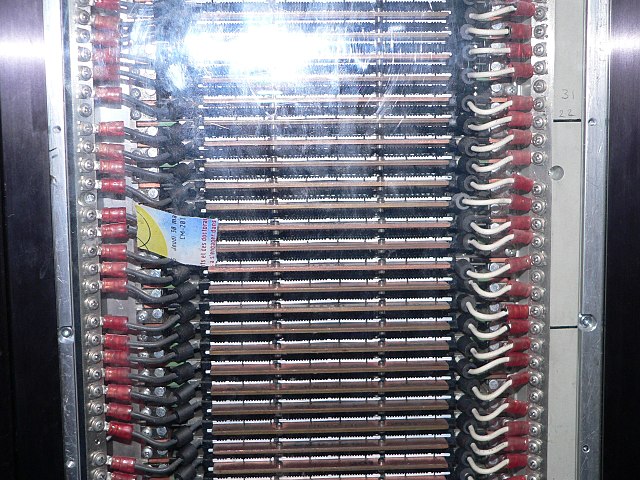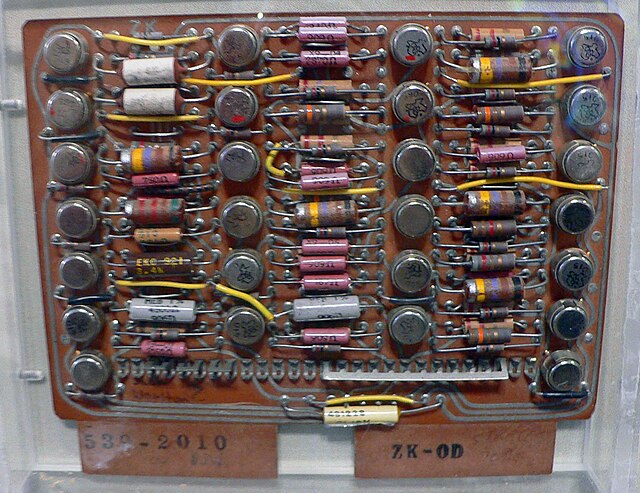The Cray X-MP was a supercomputer designed, built and sold by Cray Research. It was announced in 1982 as the "cleaned up" successor to the 1975 Cray-1, and was the world's fastest computer from 1983 to 1985 with a quad-processor system performance of 800 MFLOPS. The principal designer was Steve Chen.
The CERN Cray X-MP/48 displayed at the EPFL in Switzerland.
Cray DD-49
Logic boards of the CRAY X-MP/48
Cooling system of the CRAY X-MP/48
A supercomputer is a type of computer with a high level of performance as compared to a general-purpose computer. The performance of a supercomputer is commonly measured in floating-point operations per second (FLOPS) instead of million instructions per second (MIPS). Since 2017, supercomputers have existed which can perform over 1017 FLOPS (a hundred quadrillion FLOPS, 100 petaFLOPS or 100 PFLOPS). For comparison, a desktop computer has performance in the range of hundreds of gigaFLOPS (1011) to tens of teraFLOPS (1013). Since November 2017, all of the world's fastest 500 supercomputers run on Linux-based operating systems. Additional research is being conducted in the United States, the European Union, Taiwan, Japan, and China to build faster, more powerful and technologically superior exascale supercomputers.

The IBM Blue Gene/P supercomputer "Intrepid" at Argonne National Laboratory runs 164,000 processor cores using normal data center air conditioning, grouped in 40 racks/cabinets connected by a high-speed 3D torus network.
A circuit board from the IBM 7030
The CDC 6600. Behind the system console are two of the "arms" of the plus-sign shaped cabinet with the covers opened. Each arm of the machine had up to four such racks. On the right is the cooling system.
A Cray-1 preserved at the Deutsches Museum








